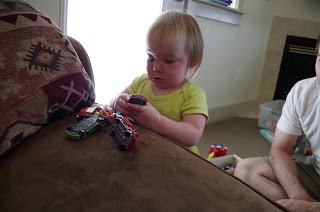| Photo courtesy of MAF |
On Monday, all of us missionary pilot mechanics gathered together in the training lab with both maintenance instructors. They went over all the general maintenance practices of MAF. This is more like an orientation to learning the guidelines, or as we say in the south, they were fixin' to get ready for somethin' else. They continued through the entire day and most of Tuesday.
On Tuesday afternoon, they split us up into two groups. One group had guys that will be serving at a base with only turboprop aircraft, so they went with their instructor to another training lab. For the most part, they studied about one engine the whole week, called the PT-6, made by Pratt and Whitney. Even though they operate aircraft made by a two or three different companies (Quest, Cessna, Pilatus), they still use the same engine.
Unfortunately, there are two issues with the Cessna maintenance manuals. The first issue is the print date of the manual. Cessna created the maintenance manual the same time the aircraft was designed in the early to mid 70's. Even then, they borrowed information from other similar and older aircraft and the book has had only a handful of revisions since then. Sometimes, the data is flat out wrong, or will reference other sources that are now out of date as well (amazingly the Federal Aviation Regulations and other FAA approved data is constantly being updated and dare I say... improved?).
The manufacturer of the aircraft publishes service information (called Service Bullitens, or Service Instruction Letters) to help mechanics with ongoing and common problems. But because MAF constantly operates so close to the edge of the aircraft's performance, while still being within the safety margins, our aircraft experience stresses and forces which cause the aircraft to break and wear in ways that Cessna is not even aware of.
MAF is always trying to stay one step ahead when it comes to safety. They publish their own internal "maintenance advisories" to increase awareness and safety of the aircraft we use in the field. Part of my training has been going through the Cessna manual, page by page, chapter by chapter, with advisory additions/notes made where needed. This way, when I'm out in the field, I will have notes providing me with additional things to look for or possible "modifications" that might be needed to improve the reliability of the aircraft.
So, Wednesday through Friday was a continued thorough study of the 206, which has some systems with more than a striking resemblance to those of the Cessna 182. I will be flying both the 206 and the 182. Also, some of the very basic information learned this week can be carried over to the Cessna Caravan.
And there you have it - week two of training! Next week, we get to fire up the engines and start doing checklists... and FLYING. Hopefully we can post some videos, too!!





































